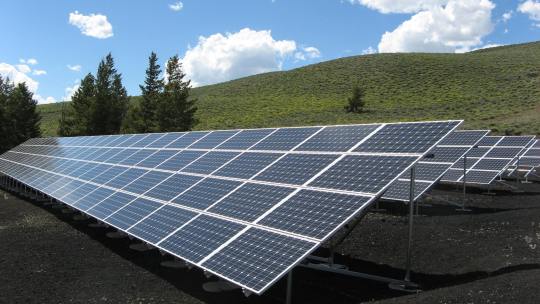Link
With extensive leadership experience, Steve Verschoor co-founded GTSP Global in 2006 and has since successfully managed the solar manufacturing company. Steve Verschoor oversees the company’s business development as well as its manufacturing and sales of solar power.
0 notes
Link
0 notes
Text
Molecular Tapped to Test COVID-19 in Washington Nursing Homes

A former account product manager at Applied Materials, Steve Verschoor oversaw sales of the company’s water fab process equipment. Now the head of sales at GTSP Global, Steve Verschoor secures international business contracts for the company. He is also a co-founder of Molecular Testing Labs.
In June 2020, Molecular Testing Labs announced that it had been contracted by the Washington Department of Health (DOH) to provide testing for COVID-19 to staff and residents at nursing home facilities. Owing to the congregate nature of these facilities and the susceptibility of residents to infection, DOH found it appropriate to necessitate universal testing for all staff and residents.
Molecular will work with the University of Washington Department of Virology to facilitate these tests. Providers simply register on Molecular’s online portal and after they are acknowledged, Molecular will send out the number of sample collection kits they require together with instructions on sample collection. The facility’s staff will collect the samples and send them to the lab for testing. The lab will communicate test results with each facility afterward.
The Centers for Medicare and Medicaid Services will meet the cost of testing for eligible facilities and the Washington State Health Care Authority will reimburse the expenses incurred by non-eligible facilities.
0 notes
Text
The Growth of Solar Power in Asia

Steve Verschoor serves as the head of sales for GTSP Global, Inc., a solar power component manufacturer he co-founded in 2008. The company, which has annual revenues that have topped $25 million, supplies some of the world’s largest solar and semiconductor companies in North America, Asia, the Middle East, and Europe. Under Steve Verschoor’s leadership, the company has opened sales offices in Tokyo, Shanghai, Taipei, and other key cities.
Experts posit that Asia will, by the year 2050, become the world’s solar energy hub. The past few years have seen notable growth in the number of larger solar farms across the continent. Installed solar energy volume in Asia has expanded significantly for more than a decade now, moving from less than 4 gigawatts in 2009 to close to 275 gigawatts in 2018.
Major Asian nations are taking advantage of a steady decline in the cost of renewable technology components, such as photovoltaic systems, to speed up construction in order to meet bold targets for renewable energy use. This build-up in renewable capacity is both responding to, and influencing, demand from business and government consumers.
China, which currently uses about two-thirds of the continent’s total installed solar capacity, is anticipated to increase its solar energy capacity by 300 gigawatts over the next year. Japan relies on solar sources to provide more than 50 percent of its overall renewable power capacity, making it the continent’s second-largest producer. Japan’s government has set a target of meeting approximately 24 percent of its total electricity needs with renewables by the year 2030.
0 notes
Text
What Are Polycrystalline Solar Panels?

Engineer Steve Verschoor is a co-founder of GTSP Global, a Taipei, Taiwan and Boise, Idaho-based solar power product manufacturer. In his work at GTSP, Steve Verschoor specializes in polycrystalline solar panels.
For those who are looking to install solar panels on a home, polycrystalline panels are a way to reduce energy costs. This type of panel is made from silicon, an element found in great quantities and is very durable. The blue panels are comprised of melted fragments of silicon that look like wafers.
Because these panels have several crystals in just one cell, there is little room for electrons to move. This results in them having a lower efficiency than monocrystalline panels, but because they are cheaper to make, they are the dominant technology for residential use. It simply means more panels must be installed for the same energy benefit as the monocrystalline type, but in practice, the difference between the two is minor. Like the monocrystalline variety, the polycrystalline panels last at least 25 years.
1 note
·
View note